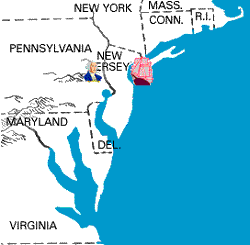Place: Saratoga on the Hudson River in New York State.
Combatants: British and German troops against the Americans.
Generals: Major General John Burgoyne commanded the British and German force. Major General Horatio Gates and Brigadier Benedict Arnold commanded the American army.
There Were: The British force comprised some 5,000 British, Brunswickers, Canadians and Indians. By the time of the surrender the American force was around 12,000 to 14,000 militia and troops.
Winner: The Americans forced the surrender of Burgoyne’s force.
British Regimens: The senior officers were Major General Phillips, Baron Riedesel, Brigadier Simon Fraser and Brigadier Hamilton.
The scope of the victory is made clear by a few key facts: On October 17, 1777, 5,895 British and Hessian troops surrendered their arms. General John Burgoyne had lost 86 percent of his expeditionary force that had triumphantly marched into New York from Canada in the early summer of 1777.
Divide and Conquer
The divide-and-conquer strategy that Burgoyne presented to British ministers in London was to invade America from Canada by advancing down the Hudson Valley to Albany. There, he would be joined by other British troops under the command of Sir William Howe. Howe would be bringing his troops north from New Jersey and New York City. Burgoyne believed that this bold stroke would not only isolate New England from the other American colonies, but achieve command of the Hudson River and corrupt the Americans and their would-be allies, such as the French.
 |
| Instead of heading north to help Burgoyne fight the rebels in Saratoga, General Howe sailed south and embarked on a campaign to capture Philadelphia. |
In June 1777, Burgoyne's army of over 7,000 men (half of whom were British troops and the other half Hessian troops from Brunswick and Hesse-Hanau) departed from St. Johns on Lake Champlain, bound for Fort Ticonderoga, at the southern end of the lake. As the army proceeded southward, Burgoyne drafted and had his men distribute a proclamation that, among other things, included the statement "I have but to give stretch to the Indian forces under my direction, and they amount to thousands," which implied that Britain's enemies would suffer attacks from Native Americans allied to the British.

Warfare is a fascinating subject. Despite the dubious morality of using violence to achieve personal or political aims. It remains that conflict has been used to do just that throughout recorded history.
ResponderEliminarYour article is very well done, a good read.
Warfare is a fascinating subject. Despite the dubious morality of using violence to achieve personal or political aims. It remains that conflict has been used to do just that throughout recorded history.
ResponderEliminarYour article is very well done, a good read.